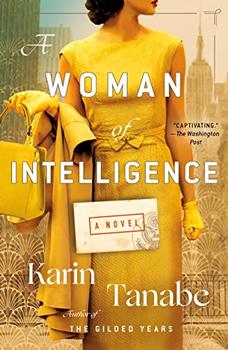Summary | Excerpt | Reviews | Beyond the book | Read-Alikes | Genres & Themes | Author Bio

A Novel
by Kate QuinnKate Quinn's novel The Briar Club opens with a murder on Thanksgiving Day, 1954. Police are on the scene at Briarwood House, a boarding house for women, where a body has been found. The residents and other guests invited for the holiday, suspects in the crime, wait while detectives try to piece together what, exactly, has happened. The narrative then jumps back to 1950 and moves forward from there, highlighting each of the house's residents and dropping clues as to what has led to the shocking act of violence depicted in the prologue.
Most of the narrative concerns past events (those occurring from 1950 up until the murder), and each chapter is relayed from the viewpoint of a specific character. Quinn uses this technique masterfully, introducing readers to each of the women from the outside — as the rest of the household sees them — but then using that character's own chapter to let us get to know the person behind the façade. Hungarian ex-pat Reka, for example, comes across simply as bad-tempered to those around her, but readers learn that she and her German husband emigrated from Berlin as the Nazis gained power, barely escaping their roundup and incarceration as Socialists. Her story is relayed in such a way that we come to care about this irascible old woman — and each of the others is written with equal care. It's an amazing feat, especially considering the novel's large cast; not only do we get to know the residents of Briarwood House but their friends and lovers as well (there are 17 present at the fateful Thanksgiving dinner, including guests). The depth with which Quinn infuses each is extraordinary, and the mark of a truly skilled author.
She is also an expert at conveying time and place, setting each scene with meticulous care:
"[The Amber Club] seemed to bloom as they came in: low-ceilinged and intimate, amber-shaded lights turning the air golden, amber velvet curtains glowing behind the stage where Joe Reiss and his bandmate were already lilting a sultry rendition of 'I Wish I Didn't Love You So.' Women in sequins listened from small tables through a purplish haze of cigarette smoke."
Readers come away with a real feel for Washington, D.C. during a volatile era, and the book is consummate historical fiction. The author explores the major concerns of the day — actions of Joe McCarthy and the House Un-American Activities Committee, the trial of Julius and Ethel Rosenberg, the Korean War — but goes beyond these topics to highlight lesser-known people and events. One character works for Senator Margaret Chase Smith, the first woman to serve in both houses of Congress, and another does occasional typing and filing for Frederic Morrow, the first Black man to hold an executive position in the White House. She writes about police raiding clubs because Black and white people were dancing together, and the Lavender Scare — McCarthy's campaign against gay people. Characters come down on different sides of issues (regarding McCarthyism, one's a Socialist, another is a true believer in McCarthy's opinions, yet another is patriotic to her core even as she disagrees with McCarthy), allowing Quinn to fully explore the intricacies of several topics.
Fans of Quinn should know The Briar Club is a bit different from her previous novels in that it's much more character-driven. I couldn't put it down, but some more familiar with her oeuvre have mentioned it feels slow. I don't think readers' expectations are helped by the fact that it's billed as a murder mystery, while the murder is actually a fairly minor part of the plot. The author's intent seems more geared toward creating fascinating characters and bringing the time to life than building a whodunnit. Indeed, my only gripe with the book was that the circumstances surrounding the crime felt rather slap-dash and not as satisfying as I'd have liked.
The Briar Club is one of the most enjoyable books I've stumbled across this year. I recommend it to those looking for a wonderfully written period piece that features exquisite characters. This will almost certainly be another bestseller for Quinn, and is sure to become a book club favorite.
![]() This review
first ran in the July 17, 2024
issue of BookBrowse Recommends.
This review
first ran in the July 17, 2024
issue of BookBrowse Recommends.

If you liked The Briar Club, try these:

by Karin Tanabe
Published 2022
From "a master of historical fiction" (NPR), Karin Tanabe's A Woman of Intelligence is an exhilarating tale of post-war New York City, and one remarkable woman's journey from the United Nations, to the cloistered drawing rooms of Manhattan society, to the secretive ranks of the FBI.

by Liza Mundy
Published 2018
"Code Girls reveals a hidden army of female cryptographers, whose work played a crucial role in ending World War II.... Mundy has rescued a piece of forgotten history, and given these American heroes the recognition they deserve." - Nathalia Holt, bestselling author of Rise of the Rocket Girls
Your guide toexceptional books
BookBrowse seeks out and recommends the best in contemporary fiction and nonfiction—books that not only engage and entertain but also deepen our understanding of ourselves and the world around us.